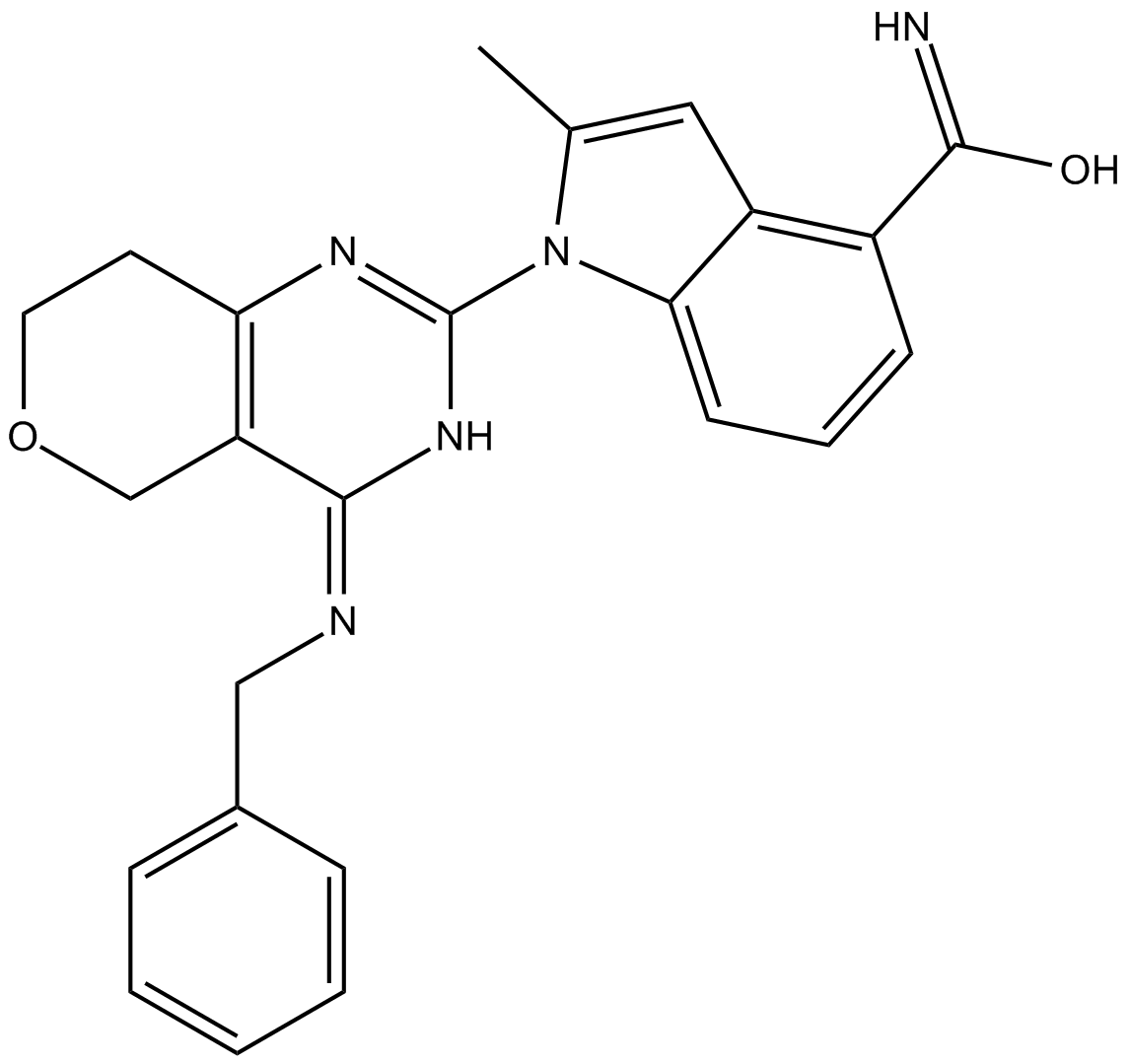CB-5083 |
| Catalog No.GC16351 |
p97 inhibitor
Products are for research use only. Not for human use. We do not sell to patients.

Cas No.: 1542705-92-9
Sample solution is provided at 25 µL, 10mM.
IC50: 15.4 nM
CB-5083 is an orally bioavailable inhibitor of p97. P97 is an AAA-ATPase involved in multiple cellular functions such as organelle membrane homotypic fusion and sorting of endosomal cargo. P97 is also known as valosin-containing protein which plays important roles in regulating protein homeostasis [1].
In vitro: CB-5083 is a selective potent inhibitor of p97’s second ATPase domain. CB-5083 might compete with ATP for the same binding site but may adopt a different orientation[2]. The IC50 of CB-5083 against wild-type (WT) p97 was 15.4 nM. CB-5083 could dose-dependently increase the cytosolic protein degradation in HEK293T, A549 and HCT116 cell lines [1]. CB-5083 treatment (2.5 μM) of A549 cells for 24h could induce cancer cell death [1].
In vivo: In female nude mice bearing HCT116, A549 lung carcinoma, and AMO-1 multiple myeloma xenograft tumors, oral administration of CB-5083 (100 mg/kg) for 6 h showed a significant antitumor response in tumors (TGI = 63%, p < 0.0001) [1,2].
Clinical trial: CB-5083 has entered phase 1 clinical trials in patients with multiple myeloma and solid tumors.
References:
[1].Anderson D J, Le Moigne R, Djakovic S, et al. Targeting the AAA ATPase p97 as an Approach to Treat Cancer through Disruption of Protein Homeostasis[J]. Cancer cell, 2015, 28(5): 653-665.
[2].Zhou H J, Wang J, Yao B, et al. Discovery of a First-in-Class, Potent, Selective, and Orally Bioavailable Inhibitor of the p97 AAA ATPase (CB-5083)[J]. Journal of medicinal chemistry, 2015, 58(24): 9480-9497.
Average Rating: 5 (Based on Reviews and 2 reference(s) in Google Scholar.)
GLPBIO products are for RESEARCH USE ONLY. Please make sure your review or question is research based.
Required fields are marked with *




















